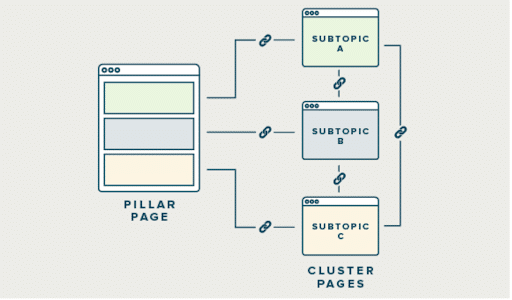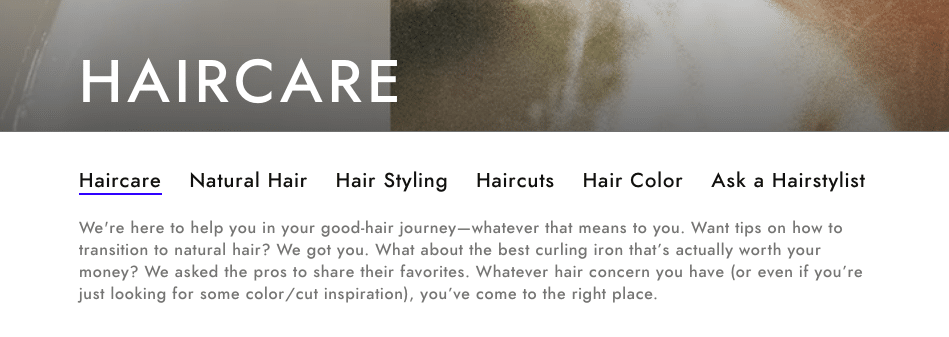Content clusters aka Pillar Content is the (easiest) and most effective way to build a content strategy.
Content Clusters are an SEO strategy designed to optimize a website’s structure and internal linking by organizing content around your pillar ideas. This content strategy uses different levels of web pages to carefully organize your content according to how relevant it is to a given topic.
The topic cluster model is built on a hub-and-spoke framework, and each cluster has three essential components:
- One broadly-focused pillar page
- Multiple in-depth cluster pages
- Strategically-placed internal links

Google dropped some major SEO bombshells in the last 2 years that support content clusters.
First, Google advanced their ability to understand subtopics around a broad interest through neural nets. Google gave this example search query. “what is the color of a jaguar”
In order to figure out what websites it should put in the SERP, google looks at the context or connected pages on the site. Google need to understand if this is about a car, the basketball team or the big cat. If we, as business can help provide context to Google, we will be found in the most appropriate searches.
In September of 2021, Google announced that they understand how searchers look for content and therefore adjusted the algorithm. Google said, “Context is King” and therefore we should organize information around broad topics and link out to more detailed information from relevant passages.
In other words, Google claims they understand how content is connected AND they understand that this is HOW users look for content. SO. If this is how Google understands searcher behavior, we should structure our site the same way.
Topic clusters enhance context, relevance & authority
How to get started with content clusters.
— Understand your audience.
— Do keyword research around topics & search intent
— Decide on the topics you want to rank for
— Choose the keywords you’ll target
— Create your pillar page (2000+ words)
How to build a hub or a pillar page
Always include an intro paragraph. This should be 2-3 sentences that introduces the topic and includes your primary target keyword.
Build a linked Table of Contents
Fill it with well researched content (2000+ words)
Make it easy to read! Use headlines, images and videos to break up the text so that it is easy to scan.
Examples of Content Cluster/Pillar Pages
Hubspot on Instagram MarketingThis is literally the ULTIMATE Guide on Instagram Marketing. Hubspot has a video ✅ Table of Contents ✅ Tons of Internal Links ✅ In-depth and helpful content ✅
Another go-to example is Byrdie.
Byrdie builds their content a little differently. They create several articles about a topic. Check out their articles on Hair Care.
The main topic is Hair Care then they narrow down the topic to sub categories.

Underneath each of these subcategories are several (10-20) articles! These articles are all related and are linked to each other. Byrdie does not run ads they invest heavily in content. They out rank major beauty brands, they have nearly 3 million ranking keywords and according to SEM Rush, get about 14.6 Million visitors a month from Google.
So please reach out to us if you need help identifying your pillar content. We can help you build a content plan that will attract the right audience.




